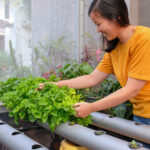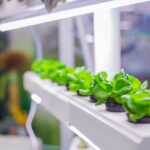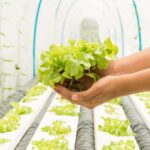Cardamom, often referred to as the “Queen of Spices,” is a prized aromatic spice known for its unique flavor and aroma. Native to the evergreen forests of India, cardamom is now cultivated in various tropical regions around the world. Growing cardamom can be a rewarding experience, whether you are a seasoned gardener or a novice. This guide will walk you through the essential steps to successfully grow and harvest cardamom.
Understanding Cardamom
Cardamom (Elettaria cardamomum) belongs to the ginger family, Zingiberaceae. The plant is a perennial herb that can reach up to 4 meters in height. It thrives in warm, humid climates and is typically grown in regions with well-distributed rainfall.
Ideal Growing Conditions
Climate
Temperature: Cardamom grows best in temperatures ranging from 10°C to 35°C (50°F to 95°F).
Rainfall: The plant requires a humid environment with an annual rainfall of 1500-4000 mm. Consistent moisture is crucial for optimal growth.
Shade: Cardamom prefers partial shade. Direct sunlight can harm the plant, so it is often grown under the canopy of taller trees.
Soil
Type: Rich, well-draining loamy soil is ideal for cardamom cultivation.
pH Level: The soil should have a pH level between 5.5 and 6.5.
Organic Matter: Incorporate plenty of organic matter, such as compost or well-rotted manure, to enhance soil fertility.
Planting Cardamom
Propagation
Cardamom is usually propagated through rhizomes or seeds. Rhizome propagation is preferred as it ensures faster growth and higher yields.
Rhizome Propagation:
Select healthy, disease-free rhizomes with at least one growing bud.
Cut the rhizomes into small pieces, each with a bud.
Plant the rhizome pieces about 5-7 cm deep in the soil.
Seed Propagation:
Soak seeds in water for 24 hours before sowing.
Sow the seeds in a well-prepared seedbed or trays filled with a mix of soil and compost.
Keep the seedbed moist and place it in a shaded area.
Transplant the seedlings to the main field when they are about 3-4 months old.
Planting Layout
Spacing: Maintain a spacing of 2-3 meters between plants and 3-4 meters between rows to allow adequate air circulation and sunlight penetration.
Depth: Plant the rhizomes or seedlings at a depth of 5-7 cm.
Care and Maintenance
Watering
Keep the soil consistently moist, especially during dry periods. Avoid waterlogging, as it can lead to root rot.
Fertilization
Apply organic fertilizers, such as compost or well-rotted manure, regularly to enrich the soil.
Use balanced NPK (Nitrogen, Phosphorus, Potassium) fertilizers during the growing season.
Mulching
Mulch the base of the plants with organic materials like straw or leaves to retain soil moisture, suppress weeds, and regulate soil temperature.
Pruning
Regularly remove dead or diseased leaves and stems to promote healthy growth and prevent the spread of diseases.
Pest and Disease Management
Common Pests
Cardamom thrips: These tiny insects can cause significant damage to cardamom plants. Use neem oil or insecticidal soap to control thrips.
Shoot and capsule borers: Regular monitoring and the use of biological controls, such as parasitic wasps, can help manage these pests.
Common Diseases
Fusarium wilt: Ensure proper drainage and avoid waterlogging to prevent this fungal disease.
Rhizome rot: Use disease-free planting material and maintain good soil drainage to reduce the risk of rhizome rot.
Harvesting
Cardamom plants typically start producing capsules 2-3 years after planting. The capsules are harvested when they are fully mature but still green. Harvesting is usually done by hand to avoid damaging the plants.
Timing: The best time to harvest cardamom is early in the morning when the capsules are turgid.
Method: Gently pluck the capsules from the plant, taking care not to damage the flower spikes.
Post-Harvest Processing
Drying: Dry the harvested capsules in the sun or using a mechanical dryer to reduce moisture content. Proper drying enhances the flavor and shelf life of the cardamom.
Storage: Store the dried cardamom capsules in airtight containers in a cool, dry place to maintain their aroma and quality.
Growing cardamom requires patience and careful attention to detail, but the rewards are well worth the effort.
With the right conditions and proper care, you can enjoy a bountiful harvest of this exquisite spice. Whether you are growing cardamom for personal use or commercial purposes, following these guidelines will help you succeed in cultivating this valuable crop.
Marketing and Selling Cardamom
Once you have successfully grown and harvested your cardamom, the next step is to market and sell your product. Here are some tips to help you get started:
Identifying Your Market
Local Markets: Start by selling in local farmers’ markets, grocery stores, and specialty spice shops. Establishing a local customer base can provide steady demand.
Online Sales: Consider selling your cardamom online through e-commerce platforms like Etsy, Amazon, or your own website. Online sales can help you reach a broader audience.
Export Markets: If you produce cardamom in large quantities, explore export opportunities. Countries with a high demand for cardamom include the Middle East, Europe, and North America.
Packaging
Quality Packaging: Use high-quality, moisture-proof packaging to preserve the flavor and aroma of your cardamom. Vacuum-sealed bags or glass jars with airtight lids are ideal.
Labeling: Clearly label your product with important information such as the date of harvest, expiration date, and any certifications (organic, fair trade, etc.). Highlight the unique qualities of your cardamom, such as its origin or any special growing practices.
Pricing
Competitive Pricing: Research the market to set competitive prices. Consider factors like production costs, market demand, and the quality of your cardamom.
Premium Pricing: If your cardamom is of exceptional quality or organically grown, you may be able to charge a premium price. Emphasize the unique selling points to justify the higher cost.
Sustainable Cardamom Farming
Practicing sustainable farming methods is essential for the long-term health of your cardamom plantation and the environment. Here are some sustainable practices to consider:
Agroforestry
Shade Trees: Plant shade trees in your cardamom plantation to create a microclimate that mimics the plant’s natural habitat. Shade trees also help reduce soil erosion and provide habitat for beneficial insects and birds.
Biodiversity: Cultivate a diverse range of plants alongside cardamom to promote biodiversity. This can enhance soil fertility, reduce pest outbreaks, and improve ecosystem resilience.
Soil Conservation
Mulching: Use organic mulches to protect soil from erosion, retain moisture, and improve soil fertility.
Contour Planting: On sloped land, practice contour planting to reduce soil erosion and water runoff.
Water Management
Efficient Irrigation: Use drip irrigation or other efficient watering methods to conserve water and ensure that your plants receive the right amount of moisture.
Rainwater Harvesting: Implement rainwater harvesting systems to collect and store rainwater for use during dry periods.
Integrated Pest Management (IPM)
Biological Controls: Use natural predators, such as parasitic wasps and predatory insects, to control pest populations.
Cultural Practices: Rotate crops and practice intercropping to disrupt pest life cycles and reduce the incidence of pest infestations.
Growing cardamom is a rewarding endeavor that requires dedication, knowledge, and careful attention to detail. By understanding the plant’s needs and providing the ideal growing conditions, you can cultivate healthy cardamom plants that produce high-quality capsules. Remember to focus on sustainable farming practices to ensure the long-term success of your plantation and contribute to environmental conservation.
Whether you are growing cardamom for personal use or commercial purposes, following these guidelines will help you achieve a successful harvest. With patience and persistence, you can enjoy the rich flavors and aromatic delights of homegrown cardamom, adding a touch of luxury to your culinary creations and contributing to the vibrant world of spices.
Additional Resources
For further information on growing cardamom, consider consulting the following resources:
Agricultural Extension Services: Reach out to local agricultural extension services for expert advice and support.
Gardening Books and Journals: There are numerous books and scientific journals available that provide detailed information on cardamom cultivation.
Online Gardening Communities: Join online forums and social media groups dedicated to gardening and spice cultivation to connect with other growers and exchange tips and experiences.






